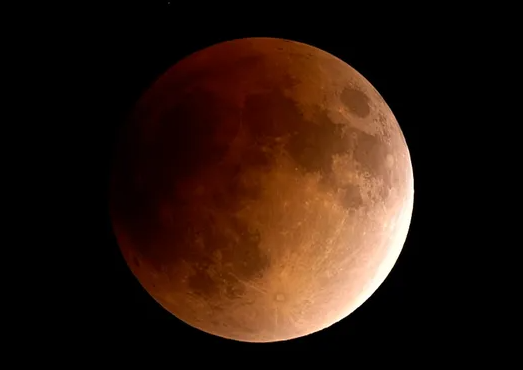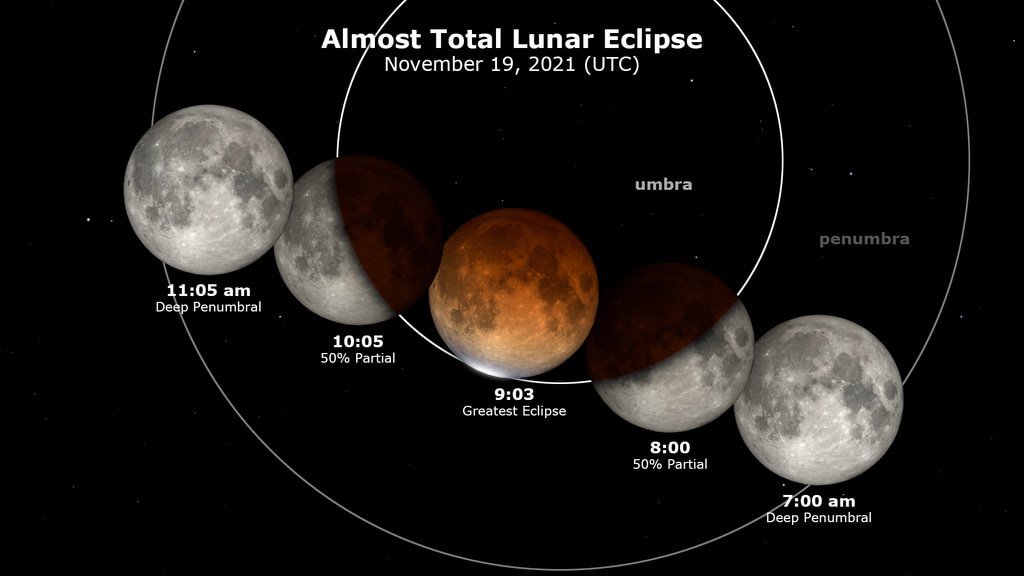7:15 AM | *Partial lunar eclipse (nearly total at 97%) late tonight from 2:18 AM to 5:47 AM (peaks at 4:02 AM)…longest partial lunar eclipse in nearly 600 years…close call on the sky cover*
Paul Dorian
A partial lunar eclipse will take place in the wee hours of the morning and it will be the longest such event in nearly 600 years…hopefully, skies will clear after midnight. Image courtesy NASA
Overview
There will be a partial (actually nearly total at 97%) lunar eclipse very late tonight that will be visible along the east coast – weather permitting. The lunar eclipse is set to begin around 2:18 AM (EST) and last until 5:47 AM (EST) with a peak around 4:02 AM (EST). In fact, this will be the longest partial lunar eclipse in nearly 600 years.
Details
First, on the weather…clouds should gradually clear after midnight following the passage of a strong cold front, but it’ll be a close call. Temperatures will drop sharply into the 30’s in the overnight hours as the next cold air mass pours into the region on strong NW winds and wind chills will be a factor after midnight. As far as the lunar eclipse is concerned, it is officially called a “partial” eclipse although nearly 97% of the moon’s surface will be shrouded in the Earth’s shadow at the peak. The eclipse will last about three and a half hours – the longest such eclipse in nearly 600 hours. What makes this eclipse so long? The Moon is near apogee, the farthest point in its orbit around Earth. Because the Moon moves slowly at apogee, it takes longer to cross Earth's shadow. According to Sky & Telescope, this will be the longest partial lunar eclipse since Feb. 18, 1440 — and we won't get a longer one until Feb. 8, 2669.
Note: times shown are UTC where 0903 UTC (peak time) is 4:03 AM EST). Credit: NASA
The specific timetable for the east coast viewing is from 2:17 AM (EST) to 5:47 AM (EST) with a peak right around 4:02 AM (EST). This eclipse coincides with the full Beaver Moon which will appear full from later this evening through Saturday morning. The Beaver Moon gets its name from beaver hunting season which used to peak this time of year. Lunar eclipses can only occur during full moons when the moon is at its brightest. This is the last lunar eclipse of the year. There will be two total lunar eclipses visible in most of the U.S. in 2022, one in May and the other in November.
Meteorologist Paul Dorian


